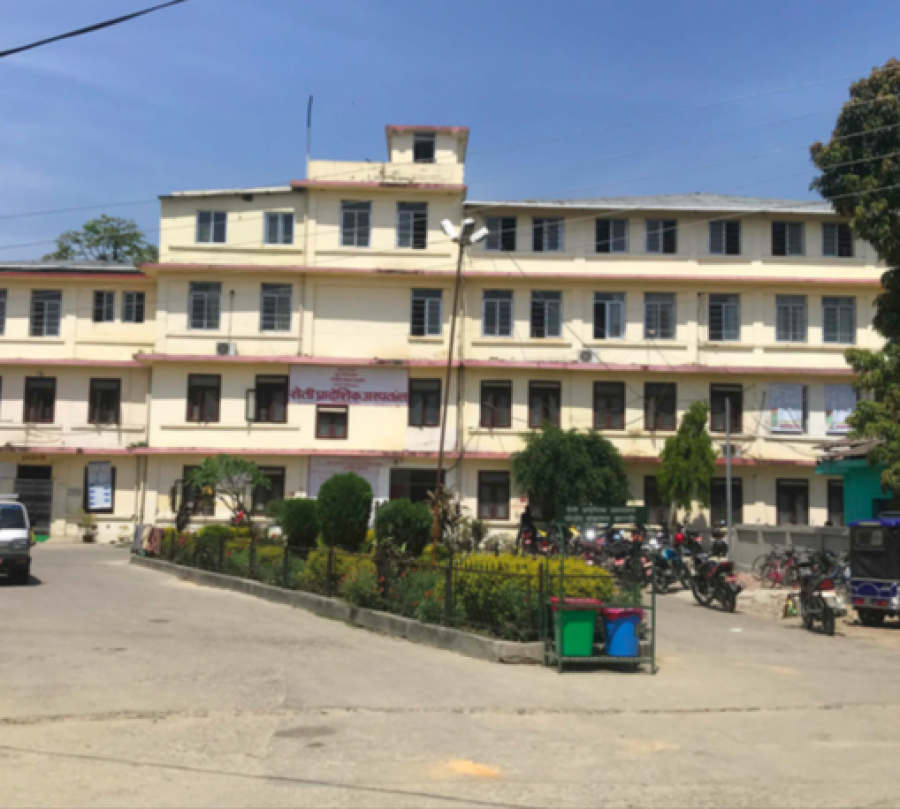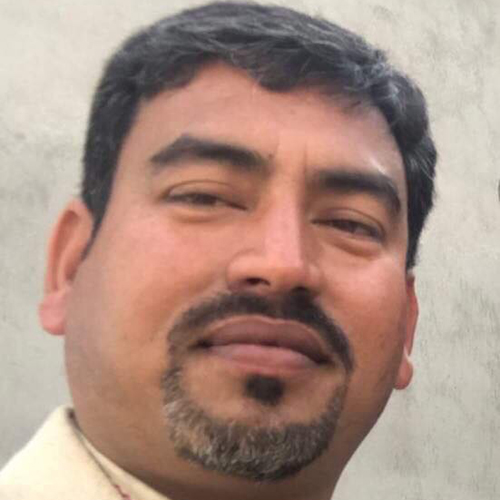When Amrit Shahi from KI Singh Rural Municipality in Kailali suffered a sudden bout of appendicitis last week, he was rushed to Shaileshwari Hospital in Silgadhi. The doctors there referred him to Dhangadhi, where the Seti Zonal Hospital is located.
After a day’s journey, Shahi reached Dhangadhi. But once there, he was admitted to Sarathi Hospital, a private facility, rather than the public Seti Zonal Hospital. The reason: he knew that four people infected with the novel coronavirus were being treated at the hospital and didn’t want to risk infection, said Shahi.
Until about two weeks ago, Seti Zonal Hospital in Dhangadhi used to see an average daily footfall of about 600 patients. These days, the number has trickled down to a few dozen. The region reported three Covid-19 cases in early April, and the infected are currently undergoing treatment at the hospital.
“These days, mostly it’s only patients who need emergency care that visit the hospital,” Dilip Shrestha, information officer at the hospital, said.
Dhangadhi has ten private hospitals, but not all of them have been in operation. As a result, many patients who would have visited hospitals in normal times, have been confined to their homes. “I have been suffering from stomach pain for a week, but I am afraid I’d catch the virus if I went to the hospital,” Prabhulal Chaudhary, a local of Dhangadhi, said.
The zonal hospital has been designated as ‘corona-dedicated hospital’; all patients who show symptoms of the viral disease are to be treated there. But even physicians and health workers are not happy with the decision.
“The hospital is the major health centre for people from the province, so the decision to make it a corona-specific hospital is not prudent,” Dr Nirajan Dutta Sharma Poudel, a senior physician at the hospital, said. “Many people are staying home even though they need treatment.”
The reason behind the fall in the number of patients visiting the hospital is the fear of catching the virus and lack of trust in hospital administration, Shrestha, who is also the hospital’s information officer, said. “ The Lockdown may be another reason. But people are afraid of catching the virus,” he said.
There were talks regarding assigning some other hospital as a corona-specific treatment centre, but the plan didn’t materialise since doctors at the zonal hospital were reluctant to move elsewhere to treat patients, according to Narendra Singh Karki, chief of the health department at the provincial ministry of social development. “But we are constructing a 50-bed makeshift hospital specially designed to treat Covid-19 patients,” he said.
According to Karki, the provincial government has allocated Rs 10 million for the construction of the makeshift hospital. But it is yet to find a proper place for the construction.
Frequently asked questions about the coronavirus outbreak
UPDATED as of September 22, 2020
What is Covid-19?
Covid-19, short for coronavirus disease, is an illness caused by the coronavirus SARS-CoV-2, short for severe acute respiratory syndrome coronavirus 2. Common symptoms of the disease include fever, dry cough, fatigue, shortness of breath and breathing difficulties. In severe cases, the infection can cause pneumonia, severe acute respiratory syndrome, kidney failure and even death.
How contagious is Covid-19?
Covid-19 can spread easily from person to person, especially in enclosed spaces. The virus can travel through the air in respiratory droplets produced when a sick person breathes, talks, coughs or sneezes. As the virus can also survive on plastic and steel surfaces for up to 72 hours and on cardboard for up to 24 hours, any contact with such surfaces can also spread the virus. Symptoms take between two to 14 days to appear, during which time the carrier is believed to be contagious.
Where did the virus come from?
The virus was first identified in Wuhan, China in late December. The coronavirus is a large family of viruses that is responsible for everything from the common cold to Middle East Respiratory Syndrome (MERS) and Severe Acute Respiratory Syndrome (SARS). After an initial outbreak in Wuhan that spread across Hubei province, eventually infecting over 80,000 and killing more than 3,000, new infection rates in mainland China have dropped. However, the disease has since spread across the world at an alarming rate.
What is the current status of Covid-19?
The World Health Organisation has called the ongoing outbreak a “pandemic” and urged countries across the world to take precautionary measures. Covid-19 has spread to 213 countries and territories around the world and infected more than 31,405,983 people with 967,505 deaths and 22,990,260 recoveries. In South Asia, India has reported the highest number of infections at 5,557,573 with 88,943 deaths. While Pakistan has reported 306,304 confirmed cases with 6,420 deaths. Nepal has so far reported 65,276 cases with 427 deaths.
How dangerous is the disease?
The mortality rate for Covid-19 is estimated to be 3.6 percent, but new studies have put the rate slightly higher at 5.7 percent. Although Covid-19 is not too dangerous to young healthy people, older individuals and those with immune-compromised systems are at greater risk of death. People with chronic medical conditions like heart disease, diabetes and lung disease, or those who’ve recently undergone serious medical procedures, are also at risk.
How do I keep myself safe?
The WHO advises that the most important thing you can do is wash your hands frequently with soap and water for at least 20 seconds or use hand sanitizers with at least 60 percent alcohol content. Avoid touching your eyes, nose and mouth with unclean hands. Clean and disinfect frequently used surfaces like your computers and phones. Avoid large crowds of people. Seek medical attention if symptoms persist for longer than a few days.
Is it time to panic?
No. The government has imposed a lockdown to limit the spread of the virus. There is no need to begin stockpiling food, cooking gas or hand sanitizers. However, it is always prudent to take sensible precautions like the ones identified above.





 8.12°C Kathmandu
8.12°C Kathmandu










%20(1).jpg&w=300&height=200)

